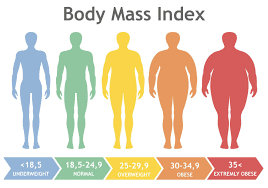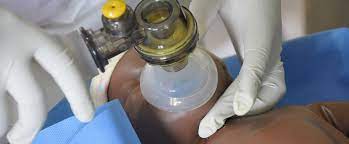Want help to write your Essay or Assignments? Click here
Determinants of health and ways they impact persons health
Introduction
To improve the health status of the community, there is need to reduce the health inequalities. This is only achieved by understanding factors that promote as well as protect health of the community, which are commonly referred to as determinants of health (Fane & Ward, 2014). These determinants are categorised into social, cultural and economic factors.
This is important because despite the fact that the USA government is spending fortune in medical care, the health outcomes still remains low than most of the developed countries. In fact, the USA IS ranked the 34th in infant mortality in the world (Potter, Trussell, & Moreau, 2009).
However, it is possible to envision the more promising end of this medical story if number of strategies are employed to understand as well as promoting the health of the community. This is achieved through analysis of health determinants as outlined by logic models (Blanchard et al., 2013).
These models are important because they are oversimplified and approximate, thus helping the identification of complex interplay, which would be important in taking action to improve the health of the population, which are developed by the new framework of health goals for USA, commonly referred to as “ Healthy People 2020 (Fane & Ward, 2014).”
This paper summarizes the main sociocultural and economic determinants of health and ways they impact the health of a person, leading to inequalities. Understanding these determinants is important because it helps improve the health of the community, thereby reducing healthcare inequalities. This aid in the identification of the specific areas for actions, which also facilitates the identification of the most feasible interventions that could aid promote quality care.
Want help to write your Essay or Assignments? Click here
Determinants of health
Evidence based study indicates that certain healthcare behaviours affects personal and community health. These includes behaviours such as smoking, poor nutrition, physical inactiveness, and excessive alcohol consumptions. Similarly, the amount of household income, educational achievement, ethnic background, employment and neighbourhoods also associated with profound effects of health (Perrin, 2013).
To start with, income and wealth determinants impact the health of a person. Research indicates that increased income improves the health outcomes. However, the relationship between health and income is not linear (Potter, Trussell, & Moreau, 2009). This is because money itself does not translate into good health. Instead, wealth is generally considered to give someone position within the society, which makes them, have better access to better economic opportunities (Salt, 2014).
This makes them live in healthy and safe communities, with better equipped facilities. Additionally, they are able to afford health insurance, and thus can access health more easily. Most have great amount of wealth and assets such as savings, low debt and high amount of savings that can be disposed to meet the health demands of the person where necessary (Blanchard et al., 2013).
Conversely, poor people are restricted to these amenities and are often exposed to environments that are health damaging. They lack sufficient amenities such as recreational facilities, grocery stores or even health care facilities (Fane & Ward, 2014). These people will lack social supports or relationships, have poor self-esteem, lack sense of control and are more likely to suffer from chronic diseases and acute stress. This impact is particularly vital in children and infants. Low income is associated with increased infant and childhood mortality.
It is also suggested that the hardship and economic deprivation in childhood significantly affect the adult health (Fane & Ward, 2014). Thus, children in low income households are more likely to suffer from poor nutrition, which results to health complications in their adult life including obesity, cancer, mental health, and cardiovascular diseases. This forms a vicious cycle of poverty and health (Potter, Trussell, & Moreau, 2009).
Want help to write your Essay or Assignments? Click here
The link between socioeconomic factors and health is clearer. However, the communities in which people live also influences their health. Literature indicates that people living in poor neighbourhoods report higher mortality rates, high incidences of chronic diseases and poorer health standards as compared with people living in safer neighbourhoods (Potter, Trussell, & Moreau, 2009). One study conducted in Wake County, North Carolina indicated that people living in poorer neighbourhoods reported higher incidences of pre-term birth, greater levels of depression, high level of teen pregnancy and increased resistance and disorders among the adolescents (Fane & Ward, 2014).
Additionally, different neighbourhoods makes it difficult to access healthy food, availability of parks and sidewalks and open spaces where people can exercise. The proximity of the people to environmental hazards also influences the quality of care (Diaz de León-Castañeda, RamÃrez-Fernández, & Pinzon Florez, 2013).
Housing also influences the health being of an individual. Living in houses that are poorly ventilated, damp, overcrowded or with poor waste disposal strategies are associated with increased diseases, communicable infections and other preventive diseases (Salt, 2014). Housing structures are very important as people spend approximately 90% of their time within their home, and thus poor housing can put people at risk of developing health complications due exposure to environmental hazards (Fane & Ward, 2014).
Additionally, overcrowding increases the risks of transmitting infectious diseases such as tuberculosis as well as other respiratory diseases (Blanchard et al., 2013). It could lead to more healthcare complication in events of pandemics such as virulent influenza. Research estimated that low income households live in overcrowded conditions, where more than 70,000 housing units in USA are overcrowded (Potter, Trussell, & Moreau, 2009). The issue is more complicated with most people facing foreclosures which is associated with the downturn of the economy. This accelerates the risk of sharing housing, and doubling up of people with their families and friends (Cai & McAdam-Marx, 2013).
Want help to write your Essay or Assignments? Click here
Academic achievement is strongly correlated with increased lifespan. Generally, people with less education are associated with more chronic complications and their life expectancies are shorter as compared with people with higher level of education (Blanchard et al., 2013). This is indicated by the healthcare study, where adults who have finished high school are more likely to have better health outcomes as compared with dropouts (Salt, 2014). In the USA, the ager adjusted mortality of people who dropped out of high school is two folds higher than those who completed their education.
These people are more likely to suffer from chronic and acute healthcare complications such as hypertension, stroke, diabetes, asthma, ulcers and emphysema. On average, it is estimated that the college graduates live five years longer as compared to those who failed to complete high school education (Diaz de León-Castañeda, RamÃrez-Fernández, & Pinzon Florez, 2013).
Research indicates that education achievement and health are not only correlated at personal level but also in their future generation. For example, maternal education is associated with better health for the children. Similarly, children born by high school dropout’s parents are two folds likely to suffer from premature death. Educated mothers’ infant mortality rates are considerably lower than uneducated parents. This is because educational achievements, wealth and health are interrelated, and have significant impacts on person’s health.
Another important health determinant is social exclusion, which is often associated with poverty. Social exclusion is associated with huge impacts in health such as premature deaths. Absolute poverty results to lack of basic materials, and is still rampant in developed countries (Salt, 2014). Most of the unemployed people, ethnic groups, refugees, homeless and the disabled are often socially excluded. This denies them the opportunity to access decent living opportunities such as education, housing, transport or even the ability to participate in various activities of the lives that makes them participate fully. This exclusion and being treated as lesser beings leads to health complications (Cai & McAdam-Marx, 2013).
Want help to write your Essay or Assignments? Click here
The social exclusions occurs inform of racism, discrimination, hostility, stigmatization as well as unemployment. These denies people their ability to participate in educative training, prevention programs or even accessing potential beneficial healthcare capacities. These issues are socially as well as psychologically damaging, and can have detrimental effects to these discriminated people (Pegram & Bloomfield, 2013).
The longer these people live in prisons, psychiatric facilities and children’s homes, and the more likelihood of them to suffer from a wide range of disorders. These incidences are also associated with increased risk of divorce, addictions and disabilities. Research indicates that people with strong family relations have better health outcomes. For instance, the highest incidences of mental illness are from single parent families (Pegram & Bloomfield, 2013).
Addiction is a public health issue of concern as it is associated with social breakdown, which worsens the issue of healthcare disparities. Addiction in this context refers to overreliance of drug use such as alcohol and cigarrette smoking. This is associated with increased mortality associated with suicides, injuries and poisoning. Although unclear, cultural values and beliefs tend to influence the quality of care (Salt, 2014).
This includes activities such as religious values that prohibits people from seeking medical assistance. Other determinants includes population based healthcare facilities as well as services. These includes activities such as sewerage and water to ensure that people’s health is maintained. The extent of funding of these activities dictates the level of the maintenance of this infrastructure, their developments and also usages.
Want help to write your Essay or Assignments? Click here
Ways the determinants of health impact people’s health
Most of the social factors mentioned above are described to have both interactive and independent effects. For instance, people with high level of incomes are more likely to have achieved higher education. They are also more likely to have more opportunities to live in safe, standard and healthy environments. Their neighbourhoods are more likely to be secure, thus promoting physical activeness. They are also able to purchase organic food as compared to those with low income households. These people are also more likely to have medical cover, which facilitates access to quality care (Cai & McAdam-Marx, 2013).
Conversely, people living with poverty are more likely to have lower education achievement, indicating that they are most likely unemployed. They will often live in substandard housing, putting them at risk of communicable diseases due to overcrowding effects and poor sanitation (Cai & McAdam-Marx, 2013). These people lack enough resources to purchase quality foods, hence depends mainly with fast food, increasing the risk of obesity. These people are more likely to engage in risky behaviours such as drug abuse and prostitutions, putting them at greater risk. This makes them experience higher levels of stress as compared with their counterparts (Pegram & Bloomfield, 2013).
Want help to write your Essay or Assignments? Click here
Whereas most of these factors are interconnected as described above, there is growing evidence that these factors independently determine the health of the people. For instance, in the USA, the health status of all ethnic communities decreases as income level decreases. It is reported that people with 100% federal poverty guidelines (FPG) reports the worse health as compared to people in other income level (Pegram & Bloomfield, 2013). However, within each income levels, specific communities have worse health outcome as compared with others.
For instance, the African American normally reports poor healthcare outcomes as compares to the Hispanics and non-Hispanics white (Cai & McAdam-Marx, 2013). These marked differences across the ethnic communities are observed in other determinants of health. Therefore, to effectively reduce the increased healthcare disparities, issues such as accessibility of educations, standard housing, safe living as well as working environments, healthcare facilities and all other opportunities that facilitate the healthy living of the community must be addressed (Diaz de León-Castañeda, RamÃrez-Fernández, & Pinzon Florez, 2013).
Conclusion
As indicated, it is evident that there is strong correlation between the health and people’s incomes and way of life including community environment, educational achievement, and ethnicity and housing conditions. It is indicated that those people with higher incomes, higher education achievement and those living in a health as well as safe environments have been associated with longer life expectancies and are associated with better health outcomes. Conversely, people with lower education levels, living below poverty line, substandard housing and those in poor neighbourhoods have poor health outcomes. This is attributable to the fact that these lack sufficient resources to treat even the preventable diseases. This translates to increased health disparities among the various ethnic groups.
References
Blanchard, C., Gibbs, M., Narle, G., & Brookes, C. (2013). Learning from communities in the USA and England to promote equity and address the social determinants of health. Global Health Promotion, 20(4 Suppl), 104-112. http://dx.doi.org/10.1177/1757975913501006
Cai, B., & McAdam-Marx, C. (2013). The determinants of antihypertensive use and expenditure in patients with hypertension in the USA. Journal Of Pharmaceutical Health Services Research, 5(1), 11-18. http://dx.doi.org/10.1111/jphs.12041
Diaz de León-Castañeda, C., RamÃrez-Fernández, D., & Pinzon Florez, C. (2013). Compared Analysis of Inequalities in Health and Influence of Social Determinants of Health in Cuba and USA. Value In Health, 16(7), A711. http://dx.doi.org/10.1016/j.jval.2013.08.2189
Fane, J., & Ward, P. (2014). How can we increase children’s understanding of the social determinants of health? Why charitable drives in schools reinforce individualism, responsibilisation and inequity. Critical Public Health, 1-9. http://dx.doi.org/10.1080/09581596.2014.935703
Pegram, A., & Bloomfield, J. (2013). The importance of measuring blood pressure in mental health care. Mental Health Practice, 16(6), 33-36. http://dx.doi.org/10.7748/mhp2013.03.16.6.33.e849
Perrin, V. (2013). Social Determinants Of Health. Health Affairs, 32(11), 2060-2060. http://dx.doi.org/10.1377/hlthaff.2013.1102
Potter, J., Trussell, J., & Moreau, C. (2009). Trends and determinants of reproductive health service use among young women in the USA. Human Reproduction, 24(12), 3010-3018. http://dx.doi.org/10.1093/humrep/dep333
Salt, R. (2011). Microcredit and the Social Determinants of Health: A Conceptual Approach. Public Health Nursing, 28(3), 281-290. http://dx.doi.org/10.1111/j.1525-1446.2010.00927.x
Want help to write your Essay or Assignments? Click here









